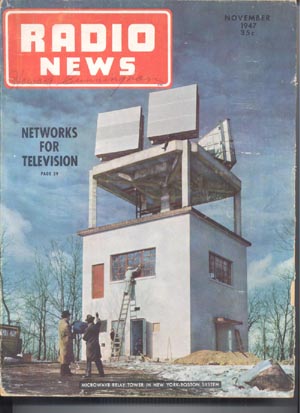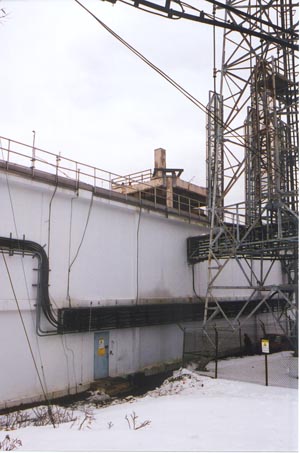Exterior - Then and Now
1947

Read the complete article
(use BACK button to return)
2001

Common Language Location Identifier (CLLI): JCJNNYQA
1947 Read the complete article |
2001 |
AT&T's Milestones in AT&T Television History web site includes another image from 1947.
Jackie Jones Mountain was a major radio junction and terminal station. It was equipped with Western Electric TD-2 (4 GHz) and TH (6 GHz) microwave radios for telephone and TV transmission, Raytheon KTR-3A microwave radios for TV, and "L" multiplex equipment for telephone trunks.
The station was also a transmit-receive site for the Echo-Fox radio system, which provided two-way voice communications for federal executive-branch VIP aircraft, including Air Force One.
A diagram from the late 1960s (exact year illegible) shows the TD-2 and KTR-3A radio configuration. The destinations of the TH radios are unknown; however, it's likely that some or all of the destinations were in common with those of the TD-2 equipment.
The diagram shows in detail the interconnections among the following:
See also: photos and description by Michael W. Jacobs.
A large collection of documents was recovered from Jackie Jones Mountain in early 2003. An inventory of this material is being posted here as it is developed, along with some of the most interesting documents or extracts. In the meantime, anyone wanting more information about the station's documents can contact me for assistance.
A large portion of the Jackie Jones Mountain collection consists of documents related to various projects completed at the station, beginning with its initial construction. These documents are stored in approximately 50 three-ring binders.
The station's personnel maintained an index of these project files in a binder labeled "Spec. File Index". The pages of that index can be view by selecting the links from the following list, which shows the range of completion years included on each page:
The following documents from this series can be viewed online:
Updated on March 11, 2004 at 03:53 by Albert LaFrance